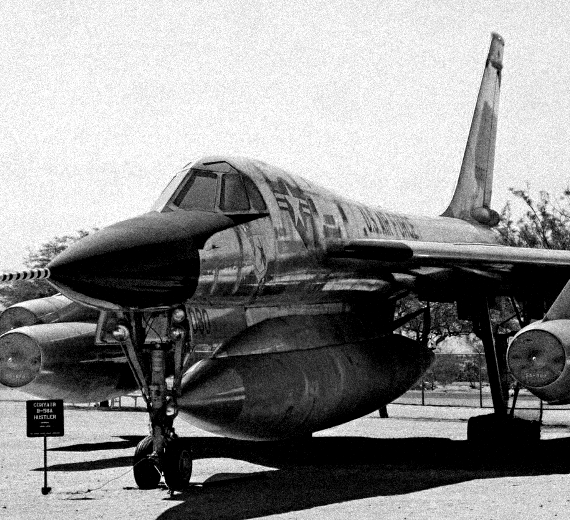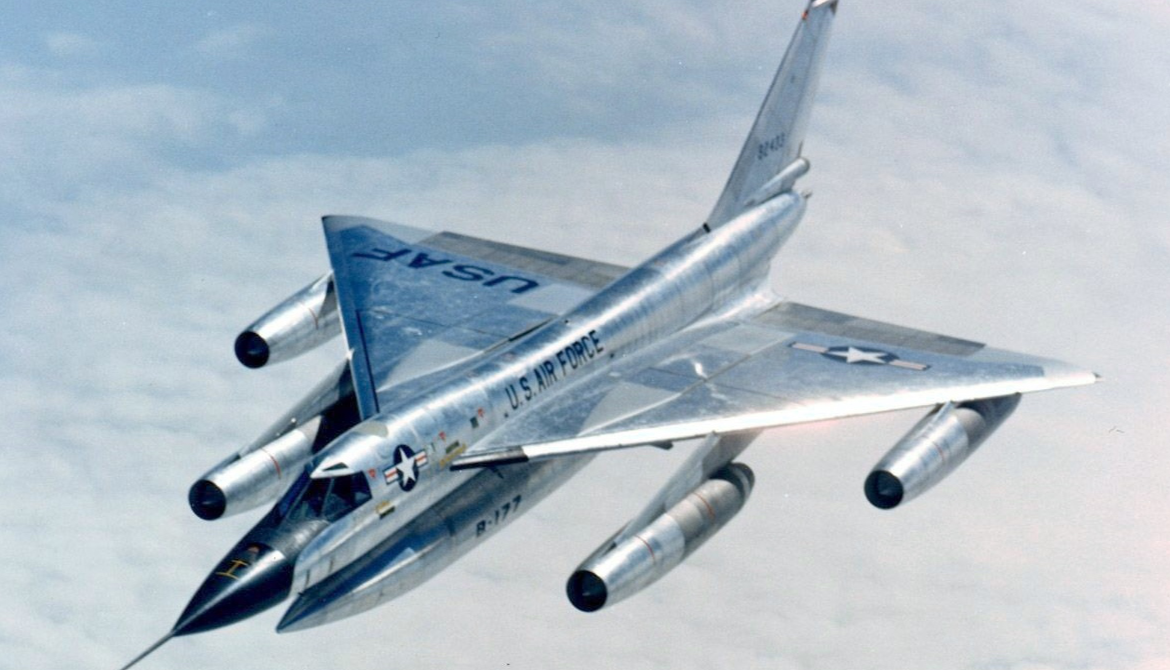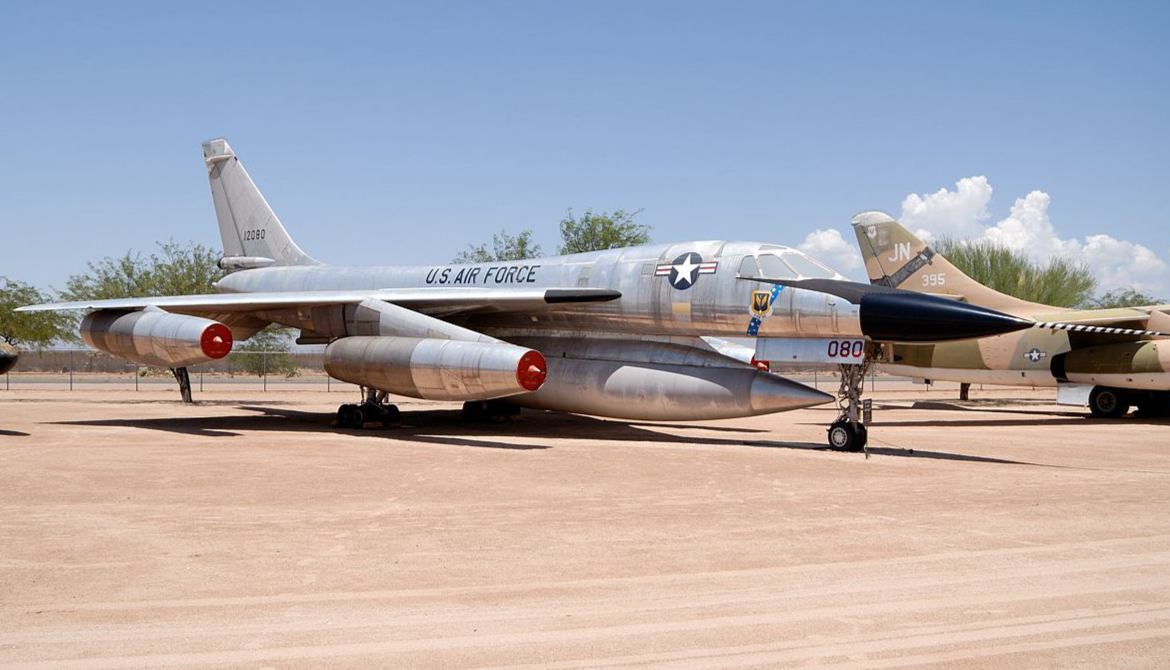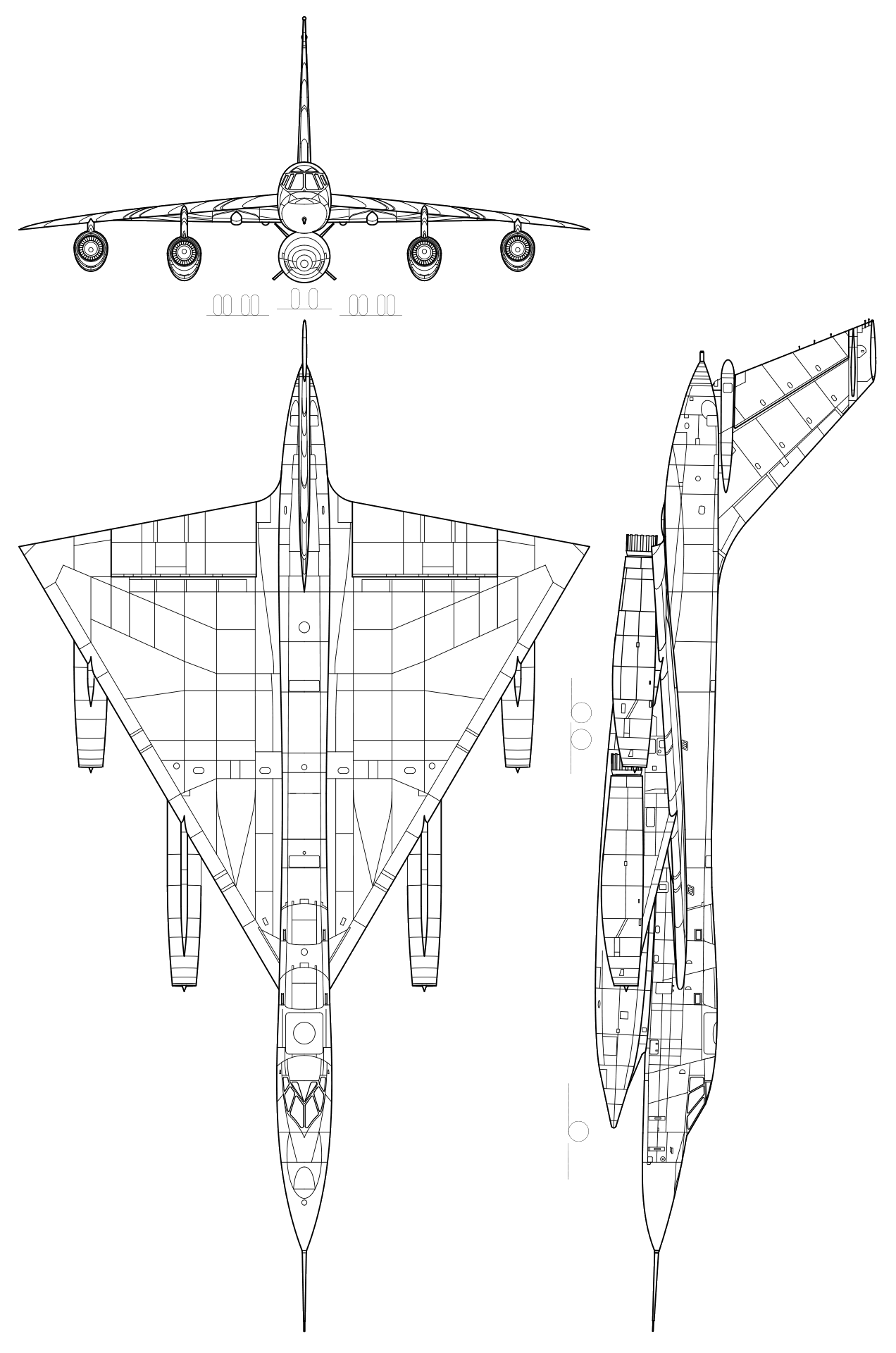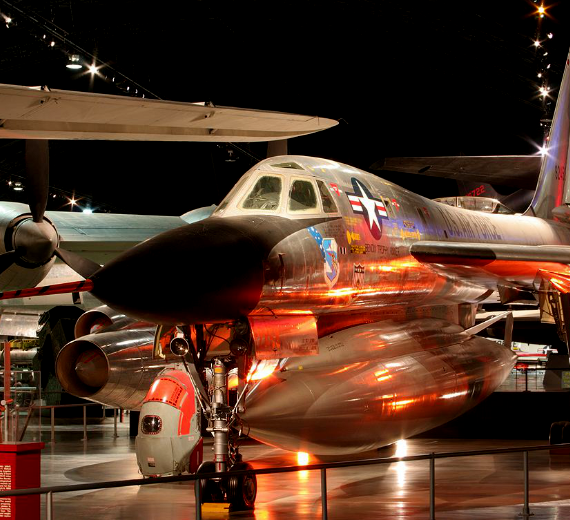Consolidated / Convair
Convair B-58 Hustler
Role Supersonic strategic bomber
National origin United States
Manufacturer Convair
First flight 11 November 1956
Introduction 15 March 1960
Retired 31 January 1970
Status Retired
Primary user United States Air Force
Number built 116
Developed into Convair Model 58-9
.
History Consolidated / Convair
Convair B-58 Hustler
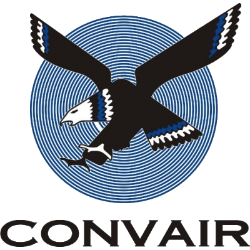
The Convair B-58 Hustler, designed and produced by American aircraft manufacturer Convair, was the first operational bomber capable of Mach 2 flight. The B-58 was developed during the 1950s for the United States Air Force (USAF) Strategic Air Command (SAC). To achieve the high speeds desired, Convair chose a delta wing design used by contemporary interceptors such as the Convair F-102. The bomber was powered by four General Electric J79 engines in underwing pods. It had no bomb bay; it carried a single nuclear weapon plus fuel in a combination bomb/fuel pod underneath the fuselage. Later, four external hardpoints were added, enabling it to carry up to five weapons.
The B-58 was designed to fly at high altitudes and supersonic speeds to avoid Soviet interceptors, but with the Soviet introduction of high-altitude surface-to-air missiles, the B-58 was forced to adopt a low-level penetration role that severely limited its range and strategic value. It was never used to deliver conventional bombs. The B-58 was substantially more expensive to operate than other bombers, such as the Boeing B-52 Stratofortress, and required more frequent aerial refueling. The B-58 also suffered from a high rate of accidental losses. These factors resulted in a relatively brief operational career of ten years. The B-58 was succeeded in its role by the smaller, swing-wing FB-111A.
Selection

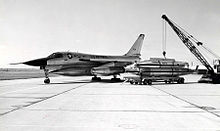
The USAF chose Boeing's MX-1712 and Convair MX-1626 design studies to proceed to a phase 1 study. During this period, Convair took advantage of recent developments by General Electric and replaced the two large J53 engines with four smaller J79s optimized for supersonic flight. The recently formulated area rule was also applied to the design, resulting in aerodynamic reprofiling and an even more slender fuselage. Having been refined, Convair redesignated their renewed submission MX-1964.
In August 1952, Convair's design was judged superior. According to Gunston and Gilchrist, Boeing's submission was viewed as equally good, but their separate contract to produce the Boeing B-52 Stratofortress had undoubtedly influenced this competition. In December 1952, Convair was chosen to meet the new SAB-51 (Supersonic Aircraft Bomber) and SAR-51 (Supersonic Aircraft Reconnaissance) standards, the first general operational requirements for supersonic bombers. In February 1953, the USAF issued a contract for Convair's design, designated B-58 on 10 December 1952.
The B-58 program, unlike those for prior military aircraft, was the first weapon-system contract. Under this arrangement, Convair acted as the prime contractor responsible for all program elements, not just the aircraft. Convair was required to devise or subcontract everything associated with the aircraft's operation, from the engines to training manuals, spare components, and software, in excess of one million items. Early on, the contract was modified to build a pair of XB-58 prototypes, 11 YB-58A preproduction aircraft, and 31 mission pods including a free-fall bomb pod, a rocket-propelled controllable bomb pod, a reconnaissance pod, and an electronic reconnaissance pod
0
KmCeiling
0
KmCombat RANGE
0
Km/hAircraft Speed
0
Max Crew
Photo Gallery
Consolidated / Convair / Vultee
Convair B-58 Hustler


Consolidated Convair Vultee
Convair B-58 Hustler
General characteristics
- Crew: Three
- Length: 96 ft 10 in (29.51 m)
- Wingspan: 56 ft 9 in (17.30 m)
- Height: 29 ft 11 in (9.12 m)
- Wing area: 1,542 sq ft (143.3 m2)
Powerplant
- Empty weight: 55,560 lb (25,202 kg)
- Gross weight: 67,871 lb (30,786 kg)
- Max takeoff weight: 176,890 lb (80,236 kg)
- Zero-lift drag coefficient: CD0.0068
- Frontal area: 10.49 sq ft (0.975 m2)
- Powerplant: 4 × General Electric J79-GE-5A afterburning turbojet, 10,400 lbf (46 kN) thrust each dry, 15,000 lbf (67 kN) with afterburner
Specifications
- Maximum speed: 1,146 kn (1,319 mph, 2,122 km/h) at 40,000 ft (12,000 m)
- Maximum speed: Mach 2.0
- Cruise speed: 530 kn (610 mph, 980 km/h)
- Range: 4,100 nmi (4,700 mi, 7,600 km)
- Combat range: 1,740 nmi (2,000 mi, 3,220 km)
- Service ceiling: 63,400 ft (19,300 m)
- Rate of climb: 17,400 ft/min (88 m/s) at gross weight
.
Links to Youtube & Others
The "Camel" may be regarded as the prototype of the Consolidated response to the USAAS's 1924 requirement for a new primary trainer. In the early summer of 1924.
Convair B-58 Hustler
On 1 August 1960, the B-58 was declared operational, nine months after the delivery of the first aircraft to the USAF.
Youtube Link
Two SAC bomb wings operated the B-58 during its operational service - the 43rd Bombardment Wing (which later transitioned to the 43rd Airlift Wing), based at Carswell AFB.
